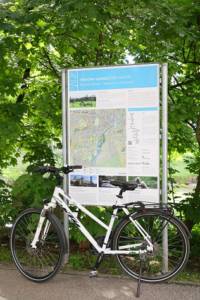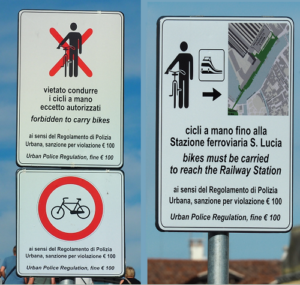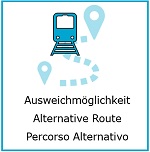Safety and Orientation
The whole Munich Venice route is signposted for an optimal orientation. The signage may vary from state to state – depending on local laws –, but is always immediately recognizable. For the whole tour the best signage is guaranteed.
Signage
On the whole 550 kilometres long cycling track from Munich to Venice you can rely on a uniform signage. You can consistently orientate yourself on the logo of the Munich-Venice cycling track, which is on all signs: With this we guarantee a simple orientation for you. Despite this we recommend to take maps with you, maybe you want to make an excursion and leave the cycling track. In addition to the signs, in Bavaria and Austria you find information boards for an overview about your location and the travelled kilometres.
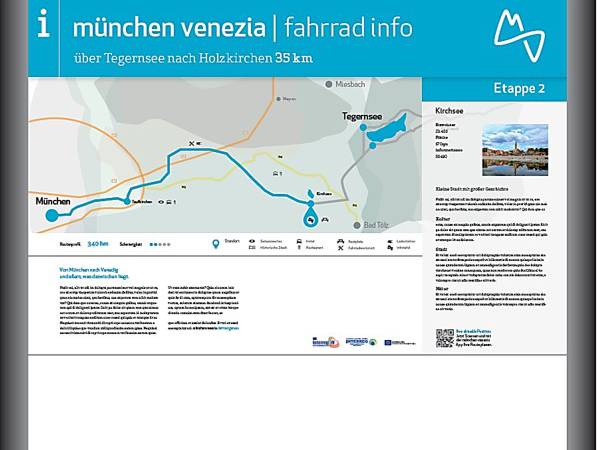
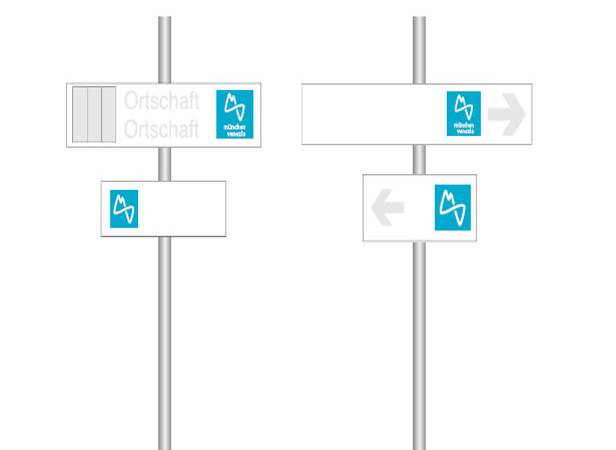
Quality of the route
Most of the cycling track from Munich to Venice uses special cycle paths. The whole track leads on tarred and gravelled ways, so that the entire length can be driven with a touring bike. Individual sections are coarsely gravelled with upward slopes and pitches. These areas are signed in the route description and there are alternative routes. For example, the upward slope to the Brenner Pass can be bypassed with the Austrian Railways (ÖBB).
Route Layout
The official start of the route is not the Marienplatz in Munich, but the Zenneckbrücke directly on the Isar (near the Deutsches Museum). There is a cycling ban at Marienplatz during the day.
The route uses existing cycling tracks and passes many interesting cities in the Alps: Munich, Venice, Insbruck, Sterzing, Brixen, Bruneck, Cortina, Belluno and Treviso. The route partially bypasses the city centres, but excursions are signed and are worth it – for a night of just for a refreshment.
On your cycling tour you have twice the possibility to decide in between alternative variations of the route. The first time is just 10 kilometres after the beginning of the track: you have the choice between driving by Bad Tölz and Lenggries or driving along the Tegernsee. Both alternatives are almost identically in length and difficulty, and both have a special charm: The romantic Isar and the city Bad Tölz or the Bavarian Voralpenland and the Tegernsee. No matter how you decide: Both routes meet shortly after the Achenpass in Austria. The second choice is shortly before you reach the target, Venice: One possibility to reach the lagoon city is through the Ponte della Libertà to the Piazzale Roma, the other is through Cavallino where you drive on a spit of land along the Adriatic coast to Punta Sabbioni and there take a ferry for the last part of the track.
ATTENTION!!! the route officially ends in Mestre! In Venice it is forbidden for visitors and holidaymakers to ride bicycles and also to take them into the city! Fines of currently 100 euros have been decided by the municipality of Venice.
On the route between the bus terminal on Piazzale Roma and Santa Lucia station, visitors are allowed to push bikes.
Along the Ponte della libertà, which leads across the lagoon to Tronchetto, there is a bicycle lane that is structurally separated from the road. We are currently negotiating with local companies for the safe parking and locking of bicycles.
Alternative Routes
Alternative route when climbing the Brenner Pass – from St. Jodok to Brenner. Route leads over the federal road, which is very busy on weekends. Click here for more information.
